A large Fish owl, in broad daylight, in the city state of Singapore? Sightings like this are the very essence of being an Incidental Naturalist.
Singapore is often referred to as the garden city. In spite of its small size (276.5 mi² or 716.1 km²), and dense population (5.4m) the nation has worked hard to maintain green areas in and around the city state. From the mangroves that bound the island to the beautifully maintained parks and gardens, wildlife can be found everywhere in Singapore.
My first experience with the Buffy Fish owl, or Malay Fish owl, was whilst on a wildlife tour of the Sabah region of Borneo. Staying in a jungle lodge, I took a night trip on the Kinabatangan River on a small boat. The guide used a spotlight to find wildlife in the trees along the river bank, which gave us an opportunity to get close to roosting kingfishers, reptiles and other tree dwelling creatures. The spotlight hit the bright yellow eyes of a Buffy Fish owl. It was a tremendous sight, and not one that I thought would be repeated outside of the jungle environment.
Back in Singapore, I had just started using a digital SLR and wanted to practice taking some sunset images after work. I drove to the Lower Peirce Reservoir, and with a couple of hour to go before sunset, I set off for a short walk through tropical vegetation on the purpose-built boardwalk. As I passed an elderly gentleman, out for his rejuvenating power-walk, he saw my camera and said “if you are interested, there is an owl in a tree by the stream inlet. Maybe he will still be there.” I thanked the gentleman, assumed that it would be gone and carried on with my slow walk.
Five minutes later, under the umbrella of dense tree canopy and tropical vegetation, over a shallow inlet to the reservoir, I was pinned by a pair of stunning, bright yellow eyes.
My sunset photography practice immediately turned in to a practice session of the type of photography that I found, and still find hardest of all; hand-held wildlife shooting, under dense, dark tree cover. Here are some of the results of my efforts.
Owls can look aggressive or sometimes regal and wise. The Buffy Fish owl, by contrast, has a comical and friendly appearance, given to it by the ear tufts that are on the side of the head, rather than the top. Growing up to 48cm (18”) the Buffy Fish owl is a medium to large bird, and certainly the largest owl that I had seen in the wild.
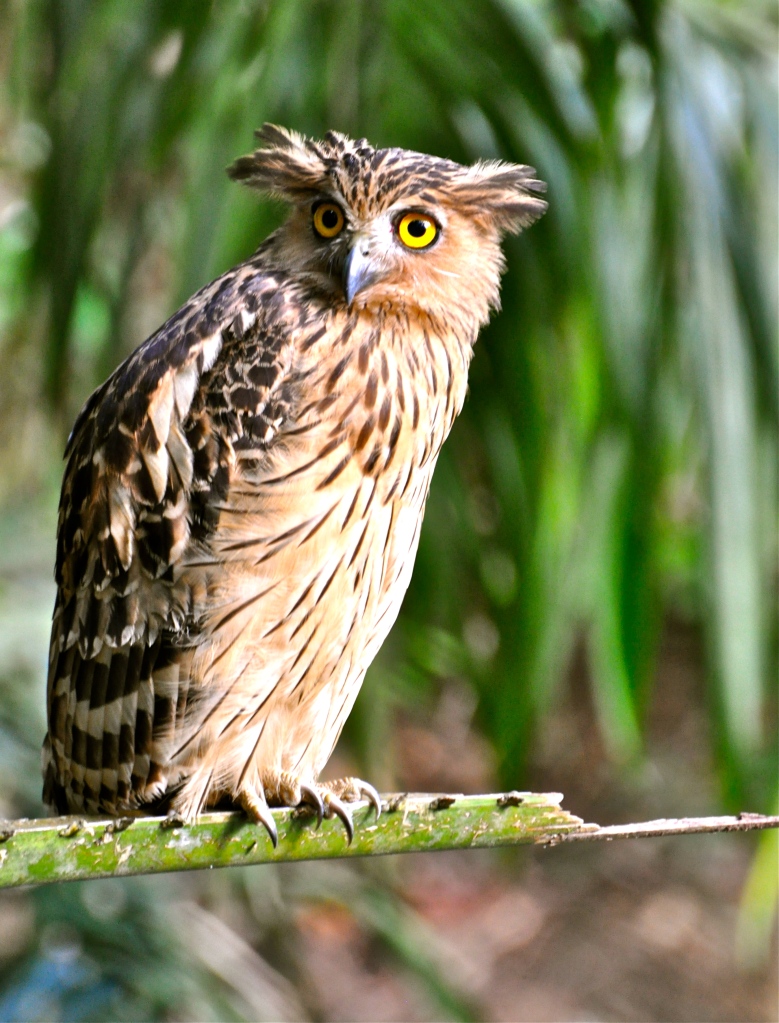
This owl was confident and relaxed, making no attempt to fly away. The eyes were bright yellow and piercing, the beak prominent, the tail short.
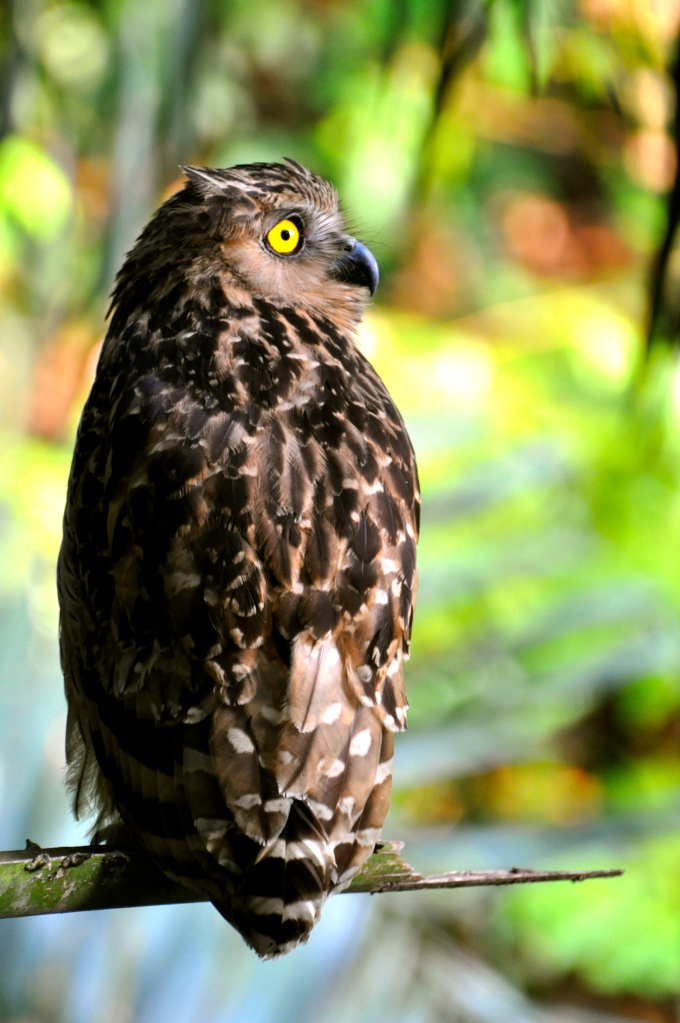
Once Buffy had become accustomed to my presence, it relaxed enough to do a little housekeeping, cleaning and preening the rich brown, mottled feathers.
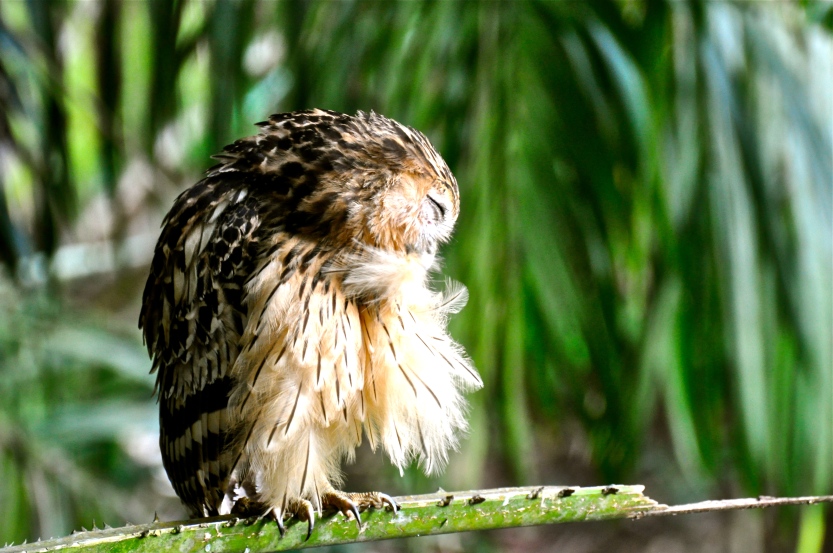
Something caught the owl’s eye. A focused stare, followed by the familiar moving of the head from side to side and up and down, as the owl locked whatever it was that caught its attention, firmly in to its sights.
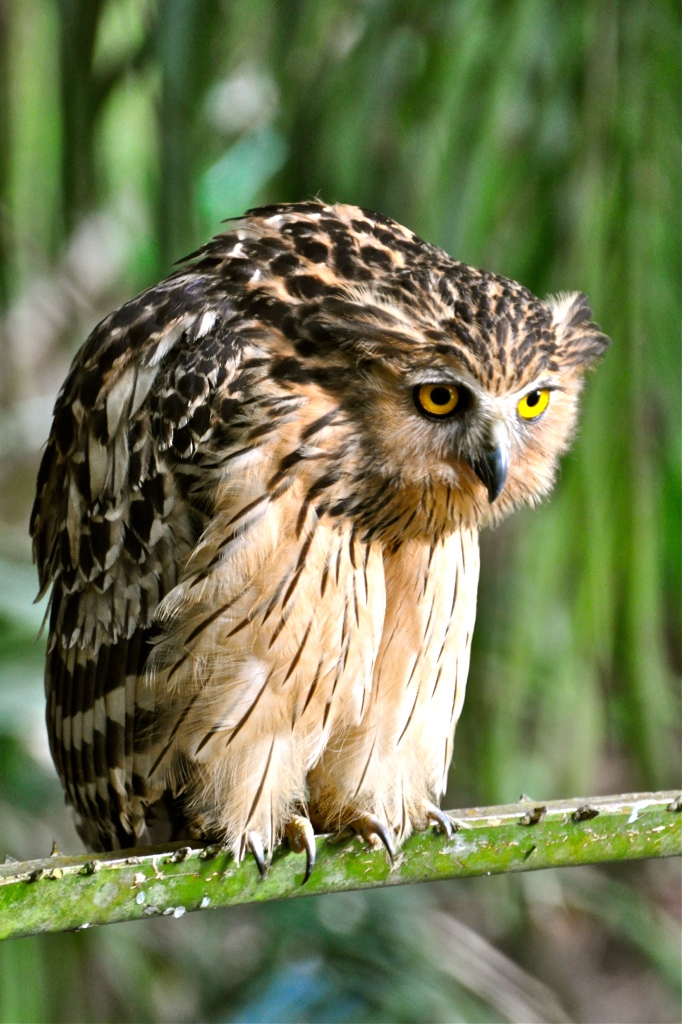
A swoop to the water’s edge and the owl dragged a fish out of the shallow water and on to the bank, pinning it under its powerful talons, while tearing in to its supper. The Buffy Fish owl has long legs and a short tail, which help it to hunt water dwelling prey without getting its feathers wet.
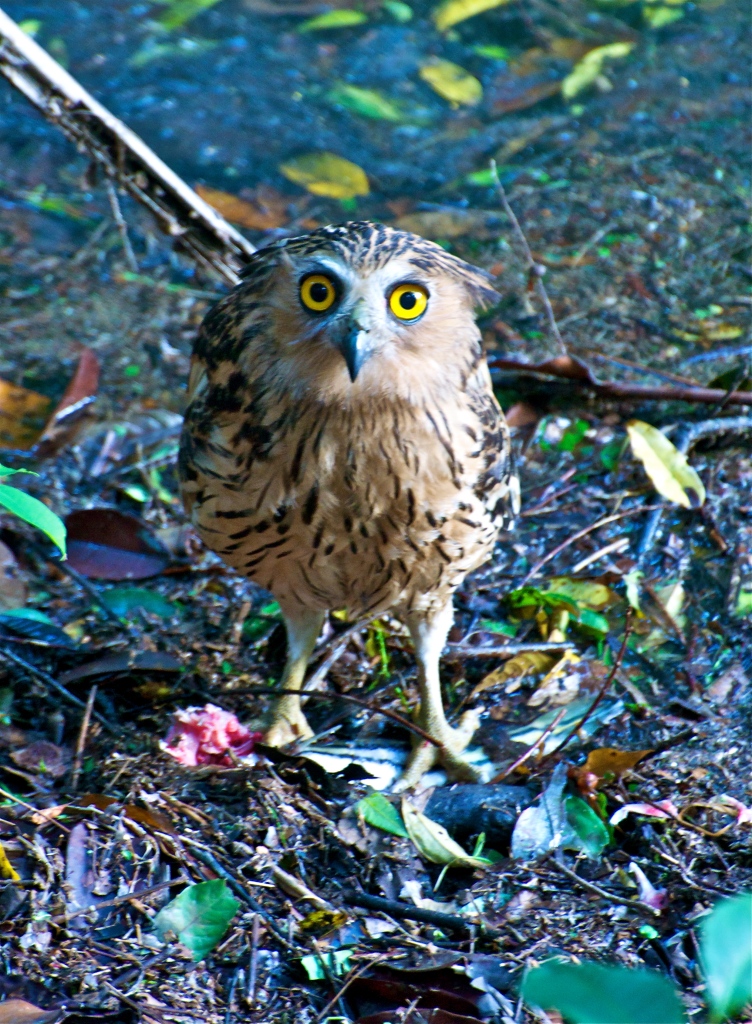
Supper finished and this was just the start of the evening for Buffy. With one flap, the owl sprung up on to a low branch, stretched its wings and glided, low over the channel of water and across the reservoir to begin a hot, humid night of hunting for fish, frogs, reptiles and large insects.
Categories: Asia
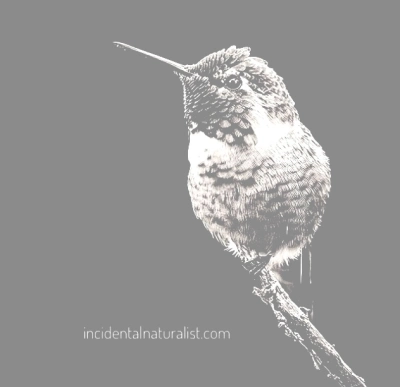




Stunning photos David, of one of my favourite predatory birds, and a lovely commentary to go with it. Just goes to show that you never know where you might find wildlife 🙂 Leah
LikeLiked by 1 person
Thanks for the kind words, Leah!
LikeLike
Great work you’ve done there!
LikeLike
Thank you so much for your kind words!
LikeLiked by 1 person
You’re most welcome!
LikeLike
Well, if this is the result you get with first use under most difficult conditions, I certainly look forward to seeing your ‘optimal conditions’ results! Fabulous. Thank you for allowing others to share your explorations. M.o.m.
LikeLiked by 2 people
Thank you for your very kind words!
LikeLike
Borneo truly is an amazing place. I had the lucky opportunity to spend 3 weeks in one of her jungles a couple of years ago. It holds a special place in my heart and seeing your amazing pictures brings back a flood full of happy memories.
Only an amazing photographer like yourself can make someone so happy with a couple of pictures.
LikeLiked by 1 person
Thank you so much for the kind word. Borneo is an extraordinary place. I hope I can get back there some day.
LikeLike
I love the animals! Bravo! Excellent work.
LikeLiked by 1 person
Reblogged this on tiock4.
LikeLike
Hello David
Your work reflects the amalgamation of both pulsating photography and unique informations
LikeLiked by 1 person
You stated that this is “…the type of photography that I found, and still find hardest of all…” a fact that astounds me because in each post I have read so far, your pictures seem to catch the most sensational views of the targeted creatures. I cannot imagine how fortunate you must feel when graced with such phenomenal sights, seemingly everywhere you turn. Thank you for sharing!
LikeLiked by 1 person
Owls are one of my favourite birds but I rarely see them in Brisbane and they are only ever a flash of wings at night. I would have been extremely excited to have seen this one. Stunning shots!
LikeLiked by 1 person
Another fine article, Dave. You never know what birds (and other animals) may be hidden away in a bustling city. Great photos.
LikeLiked by 1 person
Bird what is look me !!!
Burung hantu yang bersih dan bulu nya warna warni. Sedang apakah di atas ranting. Bukan. Kah waktu malam penampakan diri mu kenapa siang hari dengan wajah mu yang cemberut melihat di sekeliling sekitar mu apakah. Ekosistem mu / habitat mu telah di rusak. MANUSIA dan makanan nan mu buah buah an telah di ambil manusia apakah ini yang membuat cemberut wajah MU,,,
Salam. Sadar lingkungan asri
MEI,12,2015. TIME 14.07 wib
LikeLiked by 1 person
Thank you for this article and the fantastic photos to go with it. as a fish and wildlife conservation graduate, conserving these guys and their habitat and all wildlife for that matter, is my one of passions. but also for people who can see their beauty and the gracefulness of other species. Thank u David for capturing that.
LikeLiked by 1 person
Thanks for the kind comment! I am happy that you are passionate about habitat conservation. That is how we will keep protecting species.
LikeLike
What a great post with stunning photos. It’s a real pleasure to see such elegant animals such as ‘buffy’ on your doorstep. Thanks for sharing.
LikeLiked by 1 person